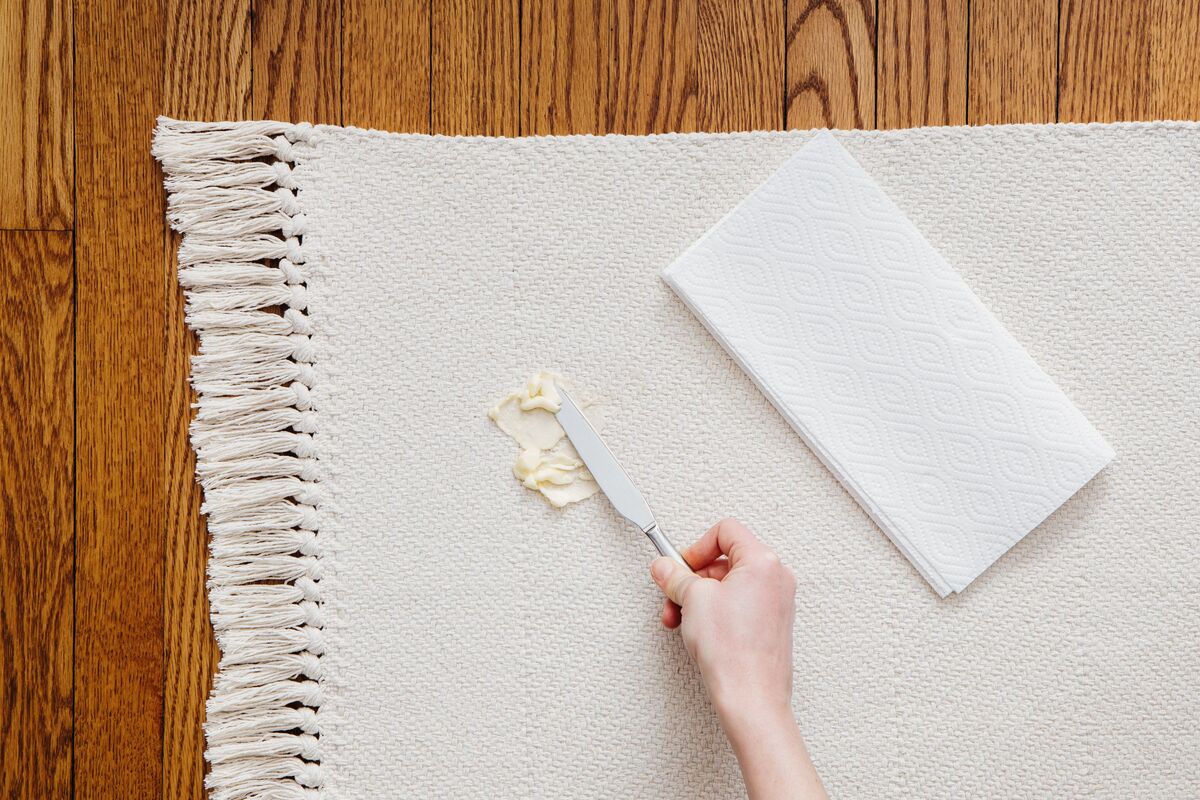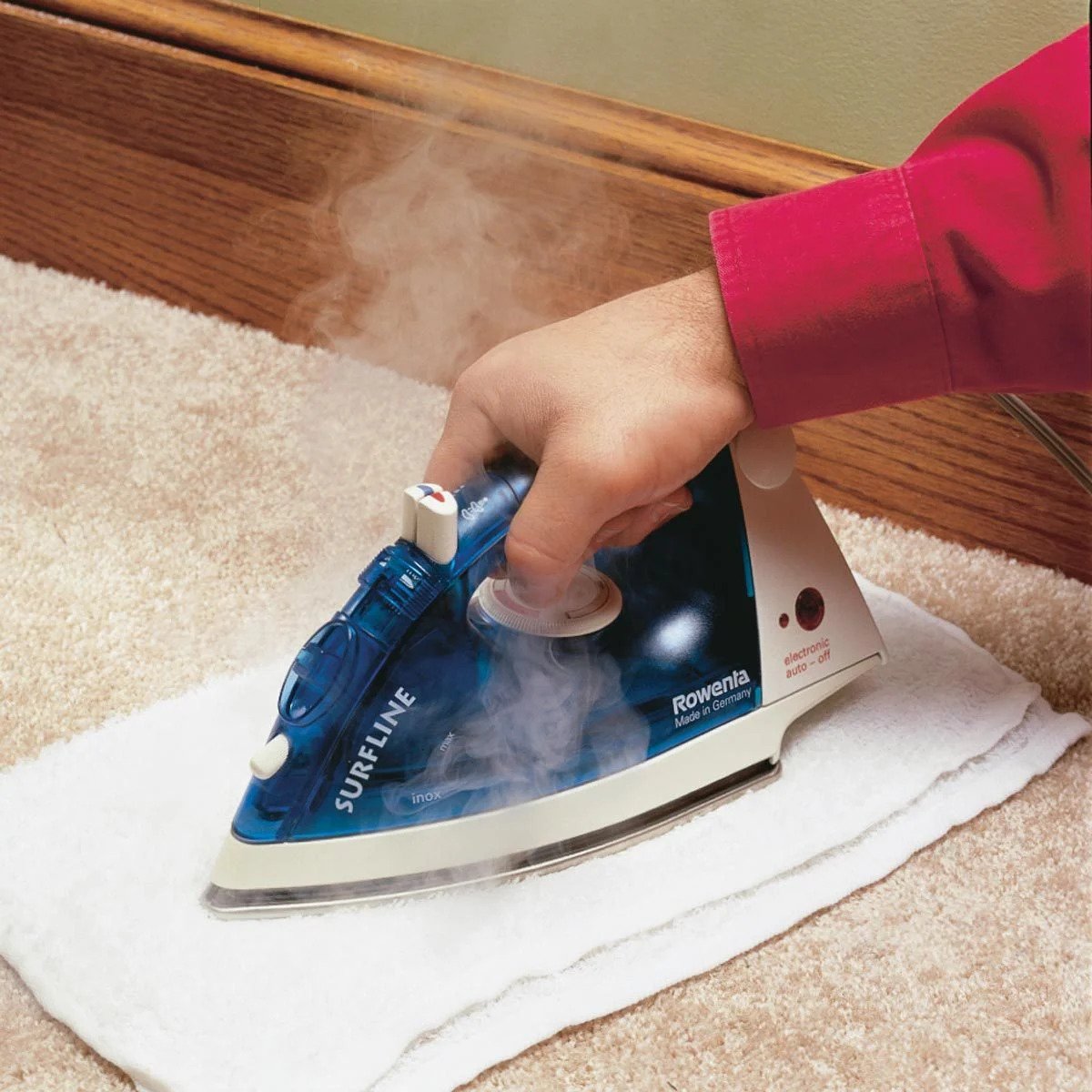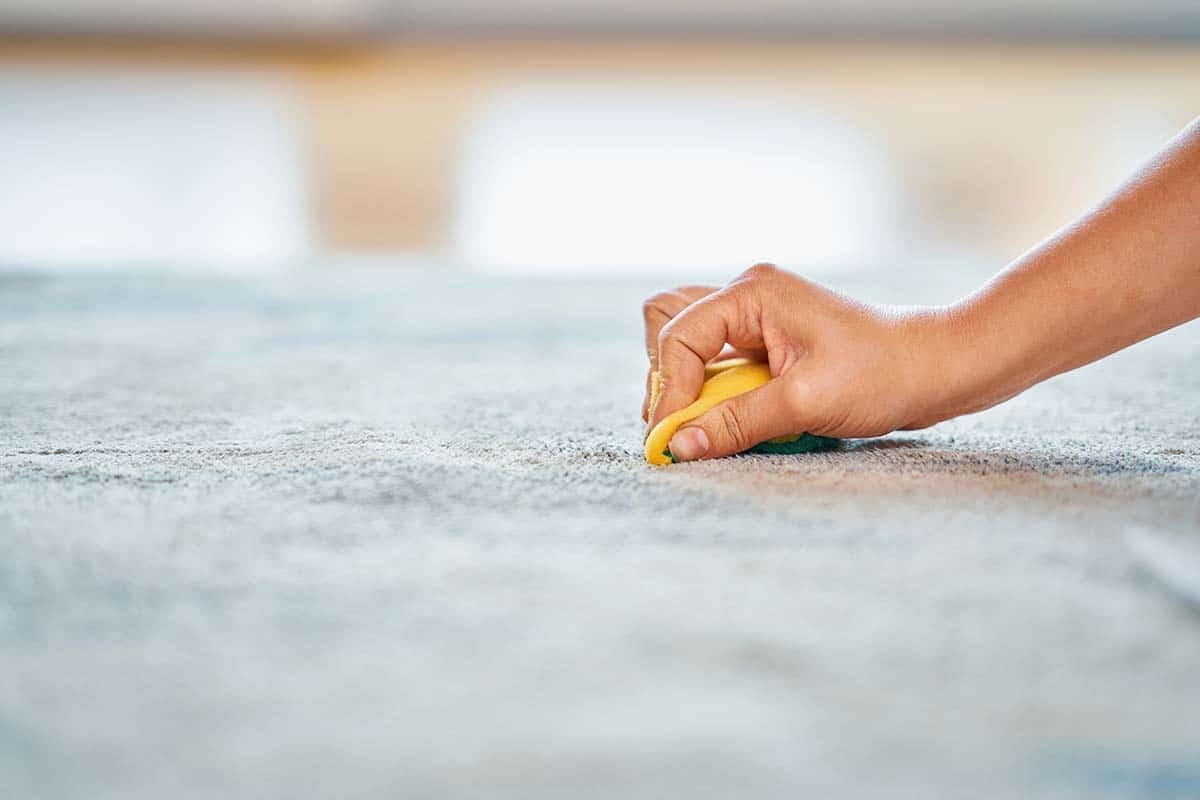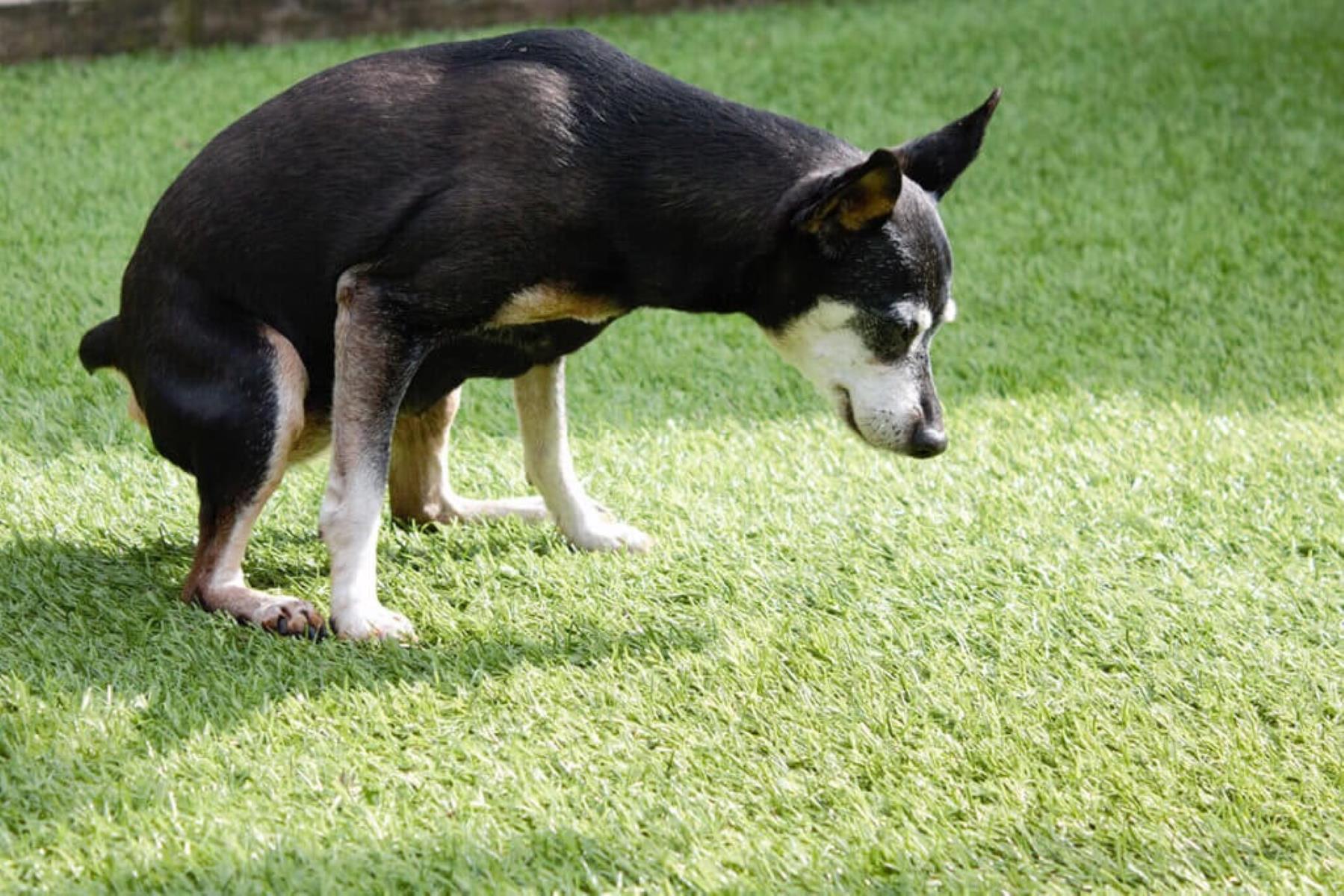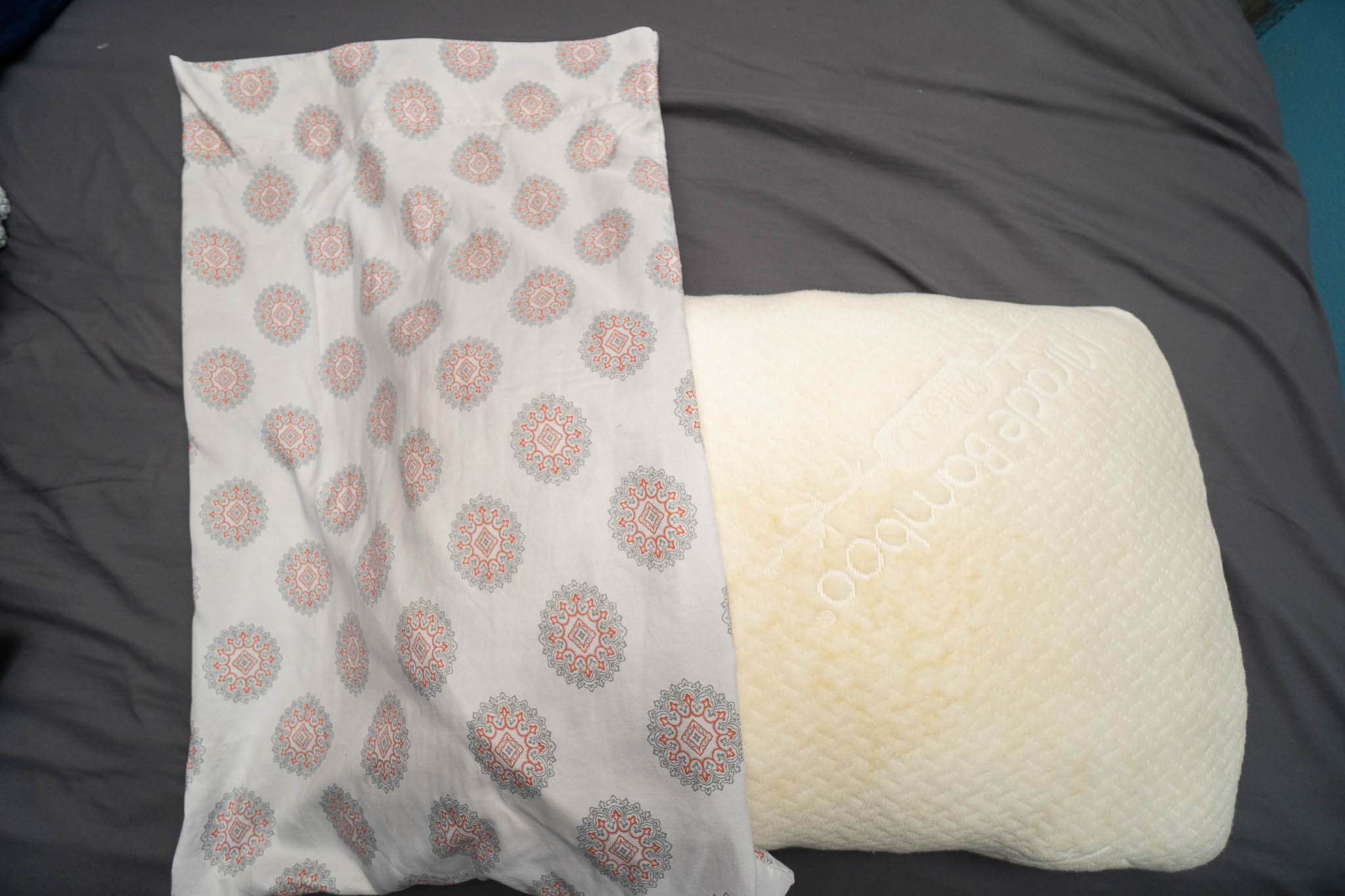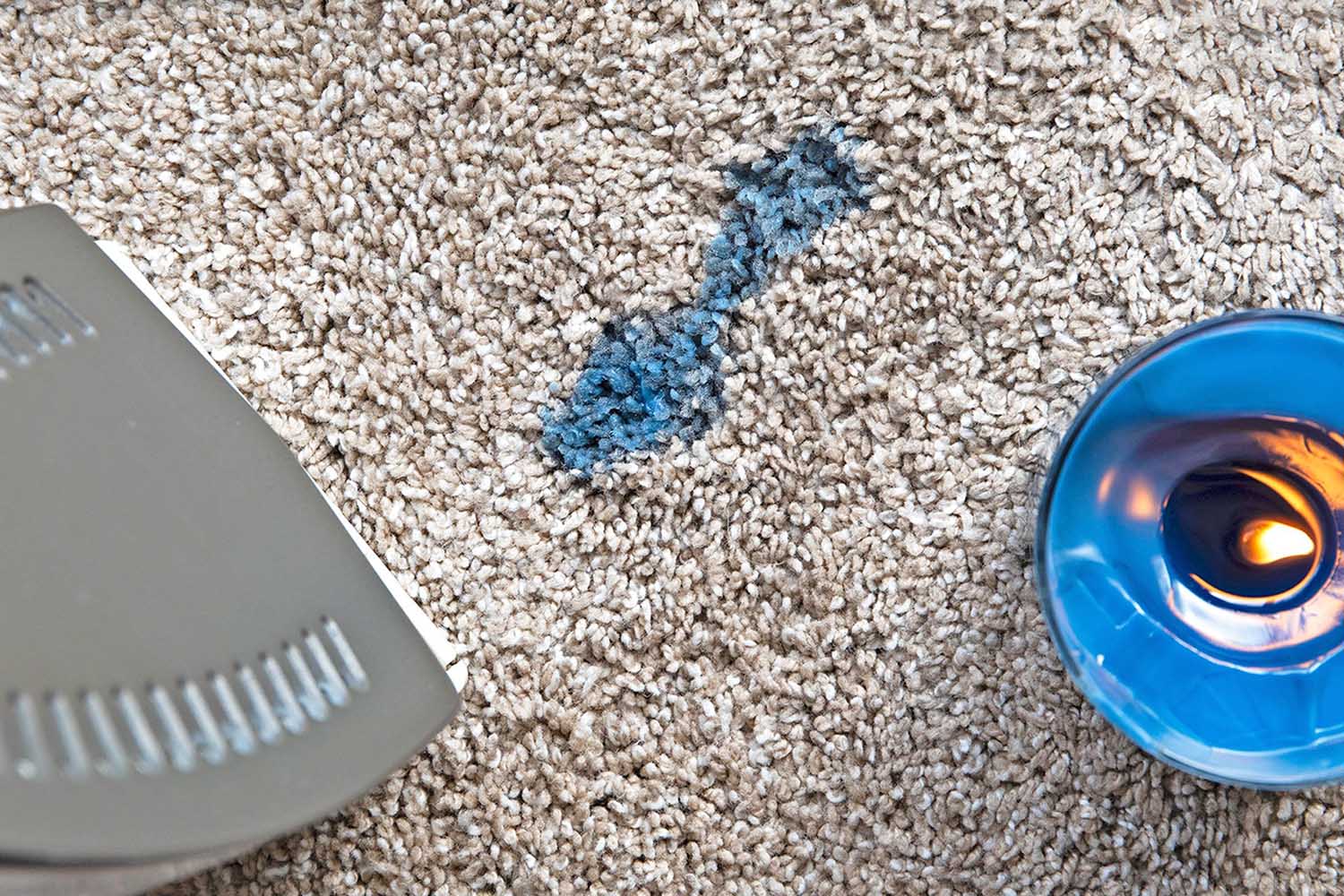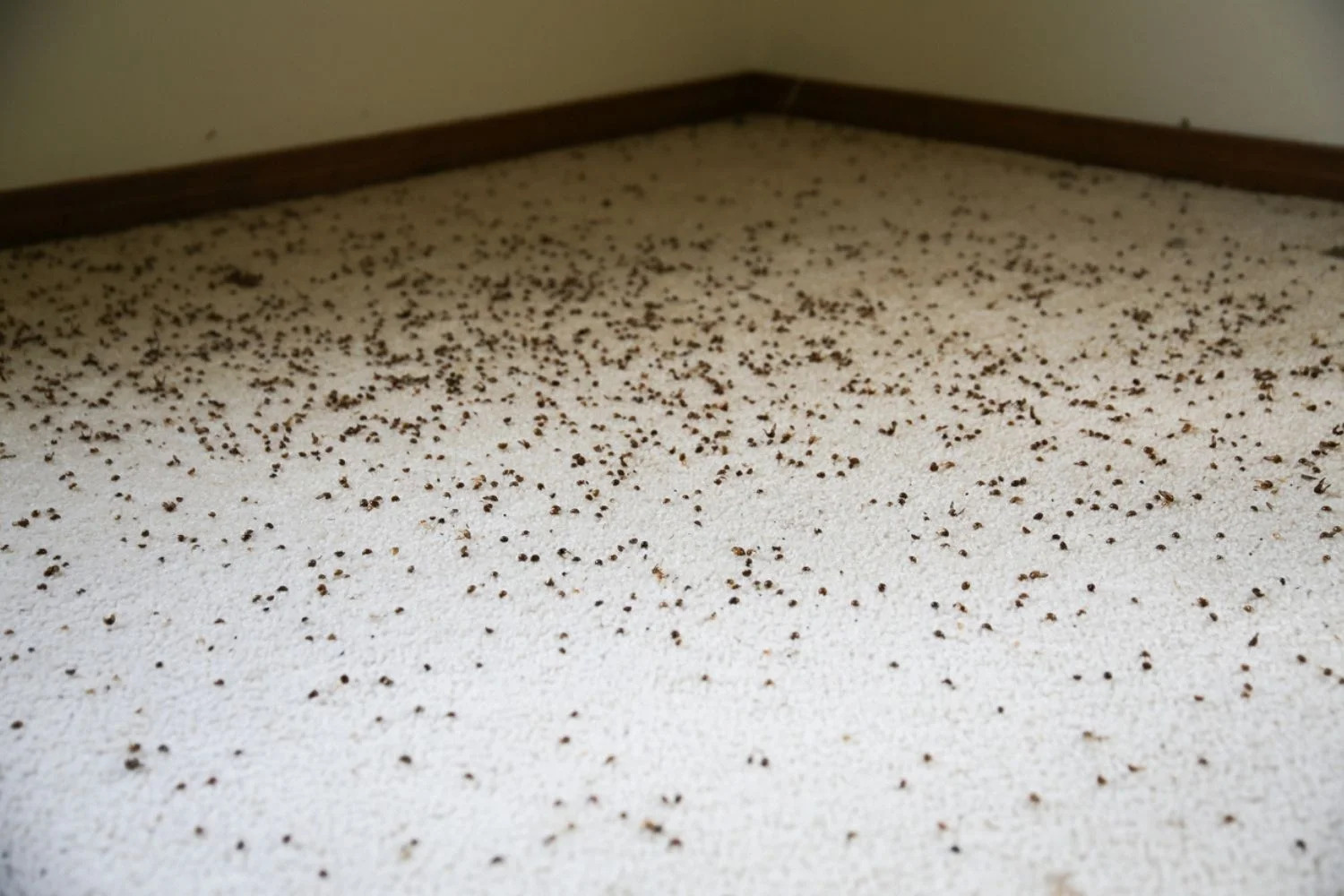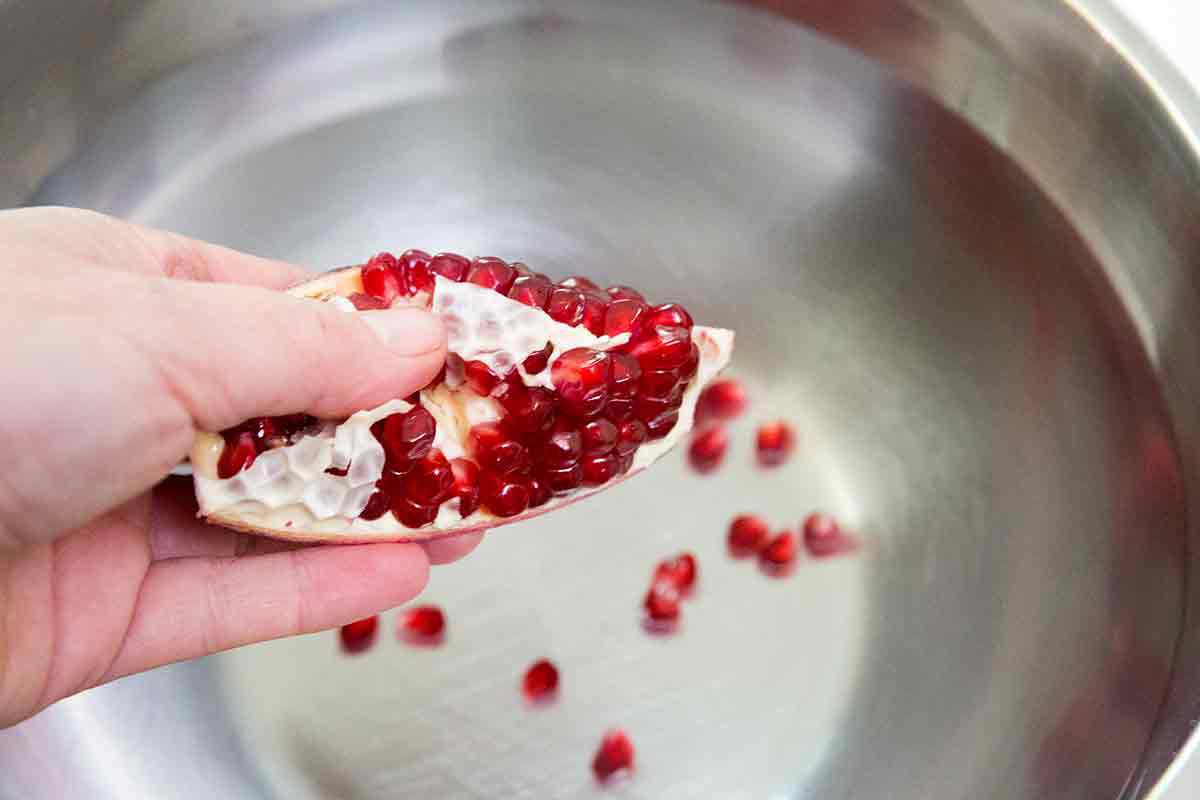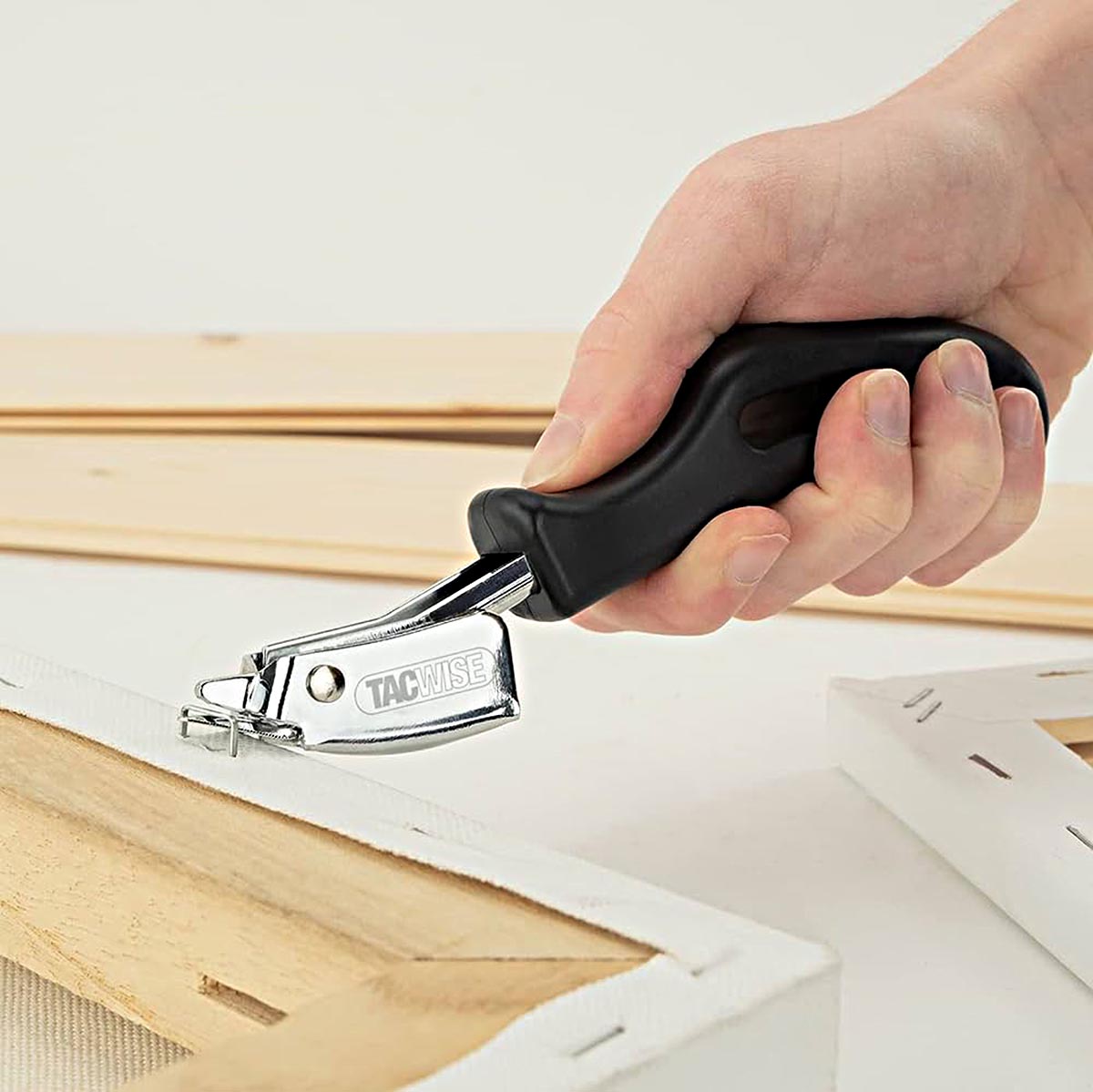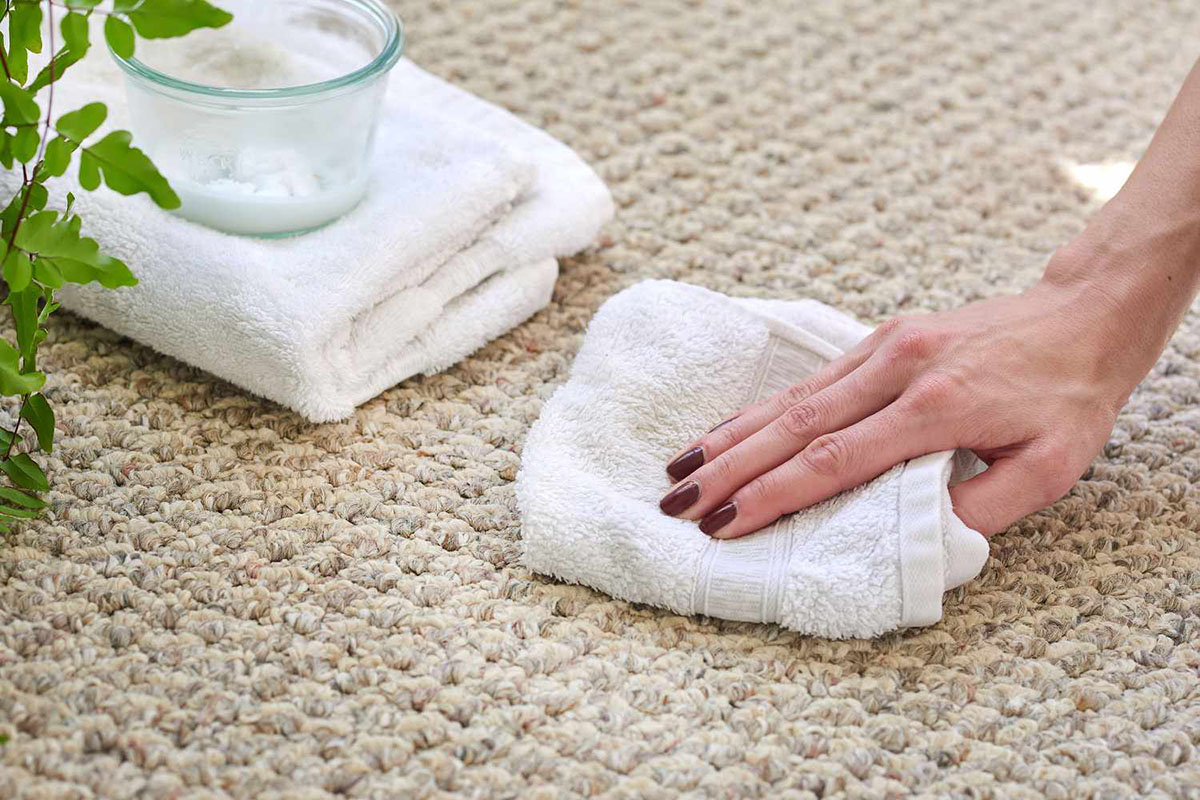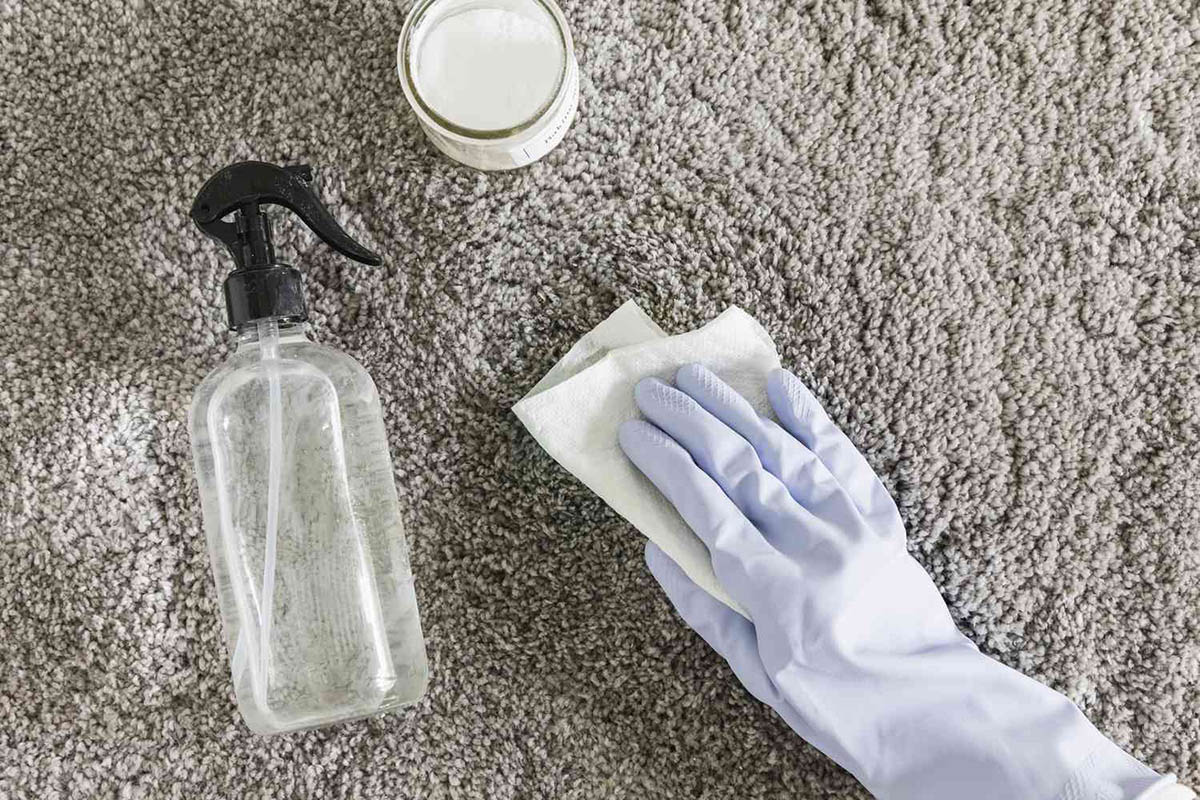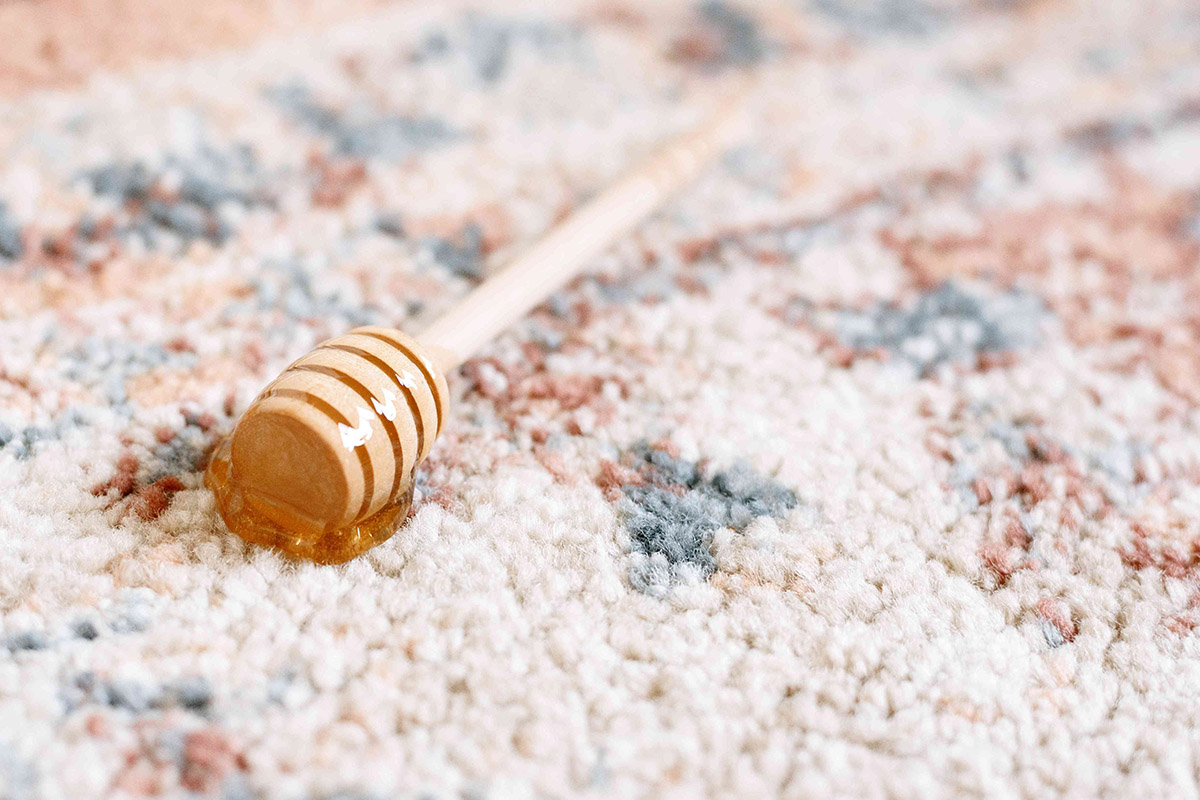

Articles
How Do You Get Oil Out Of A Carpet
Modified: August 17, 2024
Learn effective techniques and solutions to remove oil stains from your carpet in our comprehensive articles. Get your carpet looking fresh and clean again!
(Many of the links in this article redirect to a specific reviewed product. Your purchase of these products through affiliate links helps to generate commission for Storables.com, at no extra cost. Learn more)
Introduction
Have you ever experienced the frustration of spilling oil on your carpet? Whether it’s cooking oil, motor oil, or any other type of oil, getting it out of your carpet can be a daunting task. Oil stains not only leave an unsightly mark, but they can also seep deep into the carpet fibers if not addressed promptly, making their removal even more challenging.
In this article, we will explore the various methods and techniques to effectively remove oil stains from your carpet. We will cover everything from the initial steps of preparing for oil stain removal to the actual removal process for both fresh and set-in stains. Additionally, we will share some valuable tips and tricks to make the oil removal process easier and more efficient. Lastly, we will discuss preventive measures you can take to minimize the occurrence of oil stains on your carpets
Understanding how oil impacts your carpets is crucial in order to effectively remove the stains. Oil has a unique property that allows it to penetrate deep into the carpet fibers, making it difficult to eliminate with standard cleaning methods. Furthermore, if not properly treated, oil stains can attract dirt and dust, making them more visible and difficult to remove over time.
Before jumping into the stain removal process, it is important to prepare your carpet and gather the necessary tools and materials. This will help ensure that you have everything you need to tackle the stain effectively and without causing any damage to your carpet.
Whether the oil stain is fresh or set-in, there are specific methods that can be used to remove it from your carpet. For fresh stains, acting quickly is key. By immediately addressing the spill and using the appropriate cleaning agents and techniques, you can prevent the oil from deeply penetrating the carpet fibers.
On the other hand, if the oil stain has already set into the carpet, a different approach is required. Set-in stains require more time and effort to break down and remove the oil from the carpet fibers. However, with the right methods and some patience, you can still effectively remove the stain and restore your carpet to its former glory.
In addition to the main stain removal methods, we will also discuss some additional tips and tricks that can aid in the oil removal process. These include using household products such as baking soda or dish soap as well as utilizing professional carpet cleaning solutions. These techniques can help enhance the effectiveness of the stain removal process and ensure a clean and fresh carpet.
Lastly, we will touch on the importance of prevention and maintenance when it comes to oil stains on carpets. By taking proactive measures such as placing mats at entryways or implementing a no-shoe policy, you can significantly reduce the likelihood of oil stains occurring. Regular vacuuming and professional carpet cleaning also play a vital role in maintaining a clean and oil-free carpet.
With our comprehensive guide, you will have all the information you need to successfully remove oil stains from your carpets. So, if you ever find yourself facing an oil spill disaster, fear not! You now have the knowledge and tools to conquer those stubborn oil stains and keep your carpets looking fresh and clean.
Key Takeaways:
- Act swiftly when dealing with oil stains on carpets to prevent deep penetration into the fibers. Employ household items like baking soda and dish soap for effective removal of fresh stains, ensuring your carpets stay clean and spotless.
- Implement preventive measures such as using mats, enforcing a no-shoe policy, and regular vacuuming to minimize the occurrence of oil stains on carpets. Combine prompt action, preparation, and maintenance for long-lasting, oil-free carpets.
Read more: How Do You Get Playdough Out Of Carpet
Understanding the Impact of Oil on Carpets
Oil stains can leave a lasting mark on your carpets, both in terms of appearance and damage to the carpet fibers. Understanding how oil impacts your carpets is essential in order to effectively remove the stains and prevent further damage.
When oil spills onto your carpet, it quickly seeps into the fibers, creating a visible stain. However, the damage doesn’t stop there. Oil has a unique property that allows it to penetrate deep into the carpet fibers, making it difficult to remove with regular cleaning methods.
Once oil has penetrated the carpet fibers, it acts as a magnet for dust and dirt particles. These particles get trapped in the oil, making the stain more visible and harder to remove. Over time, if not properly addressed, the oil stain can become embedded in the carpet, making it even more challenging to eliminate.
Additionally, oil stains can affect the overall texture and integrity of your carpets. The oily residue can make the carpet fibers stiff and sticky, causing them to clump together and lose their softness. This can result in a rough and unappealing texture, as well as a decreased overall lifespan of your carpets.
Moreover, oil stains can leave behind a lingering odor if not properly treated. The smell of rancid oil can be unpleasant and difficult to remove, even with regular cleaning methods. Therefore, it is crucial to address oil stains promptly to prevent any lingering odors from permeating your living space.
The impact of oil on carpets can vary depending on the type of oil and the length of time it has been on the carpet. Cooking oils, such as vegetable oil or olive oil, are commonly spilled in kitchens and can leave behind greasy stains. Motor oil or other automotive fluids are also notorious for leaving stubborn stains on carpets.
It is important to note that different types of carpets may react differently to oil stains. Natural fibers, such as wool or silk, are more delicate and may require special care when removing oil stains. Synthetic fibers, such as nylon or polyester, are generally more resistant to oil stains but can still be affected if not treated promptly.
Overall, oil stains can have a significant impact on the appearance and condition of your carpets. By understanding the nature of oil stains and their effects on your carpets, you can take the necessary steps to effectively remove the stains and maintain the longevity of your carpets.
Preparing for Oil Stain Removal
Before you begin the process of removing oil stains from your carpet, it is important to properly prepare the affected area. Taking the necessary steps beforehand will ensure that you have a smooth and effective stain removal experience.
The first step in preparing for oil stain removal is to contain the spill and prevent it from spreading further. Use paper towels or clean cloths to blot up any excess oil on the surface of the carpet. Avoid rubbing or scrubbing, as this can push the oil deeper into the carpet fibers and make the stain more difficult to remove.
Once you have blotted up as much of the oil as possible, it’s time to gather the necessary tools and materials. You will need some basic supplies for the stain removal process, including:
- White vinegar
- Dish soap
- Warm water
- Clean white cloths or paper towels
- Old toothbrush or soft-bristled brush
- Absorbent material such as baking soda or cornstarch
- Vacuum cleaner with upholstery attachment
Make sure you have these items readily available before you begin the stain removal process. This will save you time and prevent any delays during the cleaning process.
Another important aspect of preparation is to test any cleaning agents on a small, inconspicuous area of your carpet. This will help ensure that the cleaning solution does not discolor or damage your carpet fibers. It is crucial to follow the manufacturer’s instructions or consult a professional if you are unsure about the compatibility of the cleaning agents with your specific carpet type.
Lastly, it’s a good idea to remove any furniture or objects from the area where the stain is located. This will provide you with ample room to work and prevent any accidental damage to your belongings. It will also allow for better access to the stained area, making the removal process easier and more efficient.
By taking these preparatory steps, you are setting yourself up for success in removing oil stains from your carpet. Properly containing the spill, gathering the necessary tools and materials, conducting a patch test, and clearing the area will ensure a smoother stain removal process and minimize the risk of further damage to your carpet.
Removing Fresh Oil Stains from Carpets
Acting quickly is crucial when it comes to removing fresh oil stains from your carpet. The faster you address the stain, the easier it will be to prevent it from spreading and deeply penetrating the carpet fibers.
Here’s a step-by-step guide to help you remove fresh oil stains from your carpets:
- Blot the Stain: Start by blotting up as much of the fresh oil as possible using clean white cloths or paper towels. Avoid rubbing or scrubbing, as this can push the oil deeper into the carpet fibers.
- Apply Cleaning Agent: Next, prepare a cleaning solution by mixing a small amount of dish soap with warm water. Apply the solution directly to the stain, making sure to saturate the affected area. The dish soap helps to break down the oil and loosen its grip on the carpet fibers.
- Agitate the Stain: Gently agitate the stain using an old toothbrush or a soft-bristled brush. This will help work the cleaning solution into the carpet fibers and further break down the oil. Be careful not to scrub too vigorously, as this can damage the carpet.
- Blot and Rinse: Blot the stain again with clean white cloths or paper towels to absorb the cleaning solution and oil residue. Rinse the area with clean water to remove any remaining soap residue. Blot the area once more to dry it as much as possible.
- Dry and Assess: Allow the carpet to air dry completely. Once dry, assess the stained area to see if the oil stain has been completely removed. If any traces of the stain remain, repeat the cleaning process or proceed to additional stain removal methods for set-in stains.
If the fresh oil stain persists even after following these steps, you can try using household items such as baking soda or cornstarch to absorb the remaining oil. Sprinkle a generous amount of baking soda or cornstarch onto the stain and let it sit for a few hours or overnight. Vacuum the area thoroughly to remove the absorbent material and assess the stain. This technique can be effective in drawing out any residual oil and reducing the visibility of the stain.
Remember, the key to successfully removing fresh oil stains is to act promptly and follow the proper cleaning steps. By addressing the stain immediately and using the appropriate cleaning agents and techniques, you can prevent the oil from setting into the carpet fibers and achieve a clean and oil-free carpet.
Blot the oil stain with a paper towel to absorb as much oil as possible. Then, apply a small amount of dish soap mixed with water to the stain and gently scrub with a clean cloth. Repeat until the stain is gone.
Removing Set-In Oil Stains from Carpets
Removing set-in oil stains from carpets requires a bit more effort and persistence compared to fresh stains. Over time, the oil can penetrate deep into the carpet fibers, making the stain more stubborn and difficult to remove. However, with the right techniques, you can still effectively eliminate set-in oil stains from your carpets.
Follow these steps to remove set-in oil stains from your carpets:
- Scrape Off Excess Oil: Start by gently scraping off any excess oil from the surface of the carpet using a plastic spoon or a blunt knife. Be careful not to press too hard to avoid pushing the oil further into the carpet fibers.
- Apply Cleaning Agent: Mix equal parts of white vinegar and water to create a cleaning solution. Dampen a clean white cloth with the solution and blot the stain, ensuring that the affected area is well-saturated. Let the solution sit on the stain for a few minutes to help break down the set-in oil.
- Blot and Rinse: Blot the stain gently with a clean white cloth or paper towel to absorb the cleaning solution and oil residue. Rinse the area with clean water to remove any remaining vinegar solution. Blot the area again to dry it as much as possible.
- Apply Dish Soap: If the stain persists, apply a small amount of dish soap directly to the stain. Gently agitate the area using a soft-bristled brush or an old toothbrush. Work the soap into the carpet fibers to help break down the remaining oil.
- Blot and Rinse Again: Blot the stain with a clean white cloth or paper towel to absorb the soapy residue and remaining oil. Rinse the area with clean water and blot once more to remove any soap residue.
- Repeat if Necessary: Assess the stained area to see if the oil stain has been successfully removed. If any traces of the stain remain, repeat the cleaning process or consider using a commercial carpet cleaner designed to tackle oil stains.
If the set-in oil stain persists despite your efforts, it may be necessary to call in professional carpet cleaners who have access to specialized equipment and cleaners. They have the expertise to effectively remove stubborn oil stains without damaging your carpets.
After removing the set-in oil stain, it is important to thoroughly dry the carpet to prevent the growth of mold or mildew. Use a fan or open windows to facilitate airflow and aid in the drying process.
Remember, patience is key when dealing with set-in oil stains. It may take multiple attempts and methods to completely eliminate the stain, so don’t get discouraged. By following the steps above and being persistent, you can restore your carpet to its pristine condition and bid farewell to those stubborn set-in oil stains.
Read more: How To Get Oil Pastel Out Of A Carpet
Additional Tips and Tricks for Oil Removal
In addition to the main stain removal methods mentioned earlier, there are some additional tips and tricks you can employ to enhance the effectiveness of oil removal from your carpets. These techniques can help tackle stubborn stains and ensure a clean and fresh carpet.
Here are some additional tips and tricks for oil removal:
- Use Baking Soda or Cornstarch: Sprinkling baking soda or cornstarch onto the oil stain can help absorb the oil and lift it from the carpet fibers. Allow the absorbent material to sit on the stain for a few hours or overnight, then vacuum it up. This technique is particularly helpful for older, set-in oil stains.
- Treat with Dish Soap: Dish soap is an effective degreaser and can be used as a spot treatment for oil stains. Apply a small amount of dish soap directly to the stain, let it sit for a few minutes, then blot and rinse as usual.
- Try WD-40: WD-40 is known for its ability to remove grease and oil stains. Apply a small amount of WD-40 to a clean white cloth and dab it onto the stain. Blot the stain gently, then rinse and blot again with a clean cloth. Remember to test WD-40 on an inconspicuous area first to ensure compatibility with your carpet.
- Consider Commercial Stain Removers: There are numerous commercial carpet stain removers available that specifically target oil stains. Look for products that are designed to break down grease and oil. Follow the instructions on the product packaging and test a small area before applying it to the entire stain.
- Use Professional Carpet Cleaning: If all else fails or if you have particularly stubborn or extensive oil stains, it may be best to hire professional carpet cleaners. They have the knowledge, experience, and specialized equipment to effectively remove oil stains without causing damage to your carpets.
- Prevent Future Stains: Prevention is always better than cure. To minimize the occurrence of oil stains on your carpets, consider implementing preventive measures such as placing mats at entryways, enforcing a no-shoe policy indoors, and keeping food preparation areas well-maintained and clean.
Remember to always follow the manufacturer’s instructions for any cleaning agents or techniques you use. Additionally, perform a patch test in an inconspicuous area of your carpet to ensure compatibility and prevent any unintended damage or discoloration.
By incorporating these additional tips and tricks into your oil stain removal process, you can increase your chances of successfully eliminating the stains and preserving the appearance and longevity of your carpets.
Prevention and Maintenance of Oil Stains on Carpets
While it’s important to know how to remove oil stains from carpets, preventing them in the first place is the ideal scenario. By implementing preventive measures and practicing regular maintenance, you can minimize the occurrence of oil stains and keep your carpets looking clean and fresh for longer.
Here are some prevention and maintenance tips to help you avoid oil stains on your carpets:
- Place Mats and Rugs: Use mats or rugs in high-traffic areas, especially places where oil spills are more likely to occur, such as near kitchen counters or entrances. These mats can help trap dirt, oil, and other contaminants, preventing them from reaching your carpets.
- Implement a No-Shoe Policy: Encourage family members and guests to remove their shoes upon entering your home. Shoes, especially those worn outside, can track in dirt, oil, and other substances that can stain your carpets.
- Clean Spills Immediately: Act quickly to clean up any oil or liquid spills on your carpets. Use paper towels or clean cloths to blot up the spill, being careful not to rub or scrub, which can cause the liquid to spread deeper into the carpet fibers.
- Use Protective Measures: Consider using protective covers or mats under furniture that may come into contact with your carpets. This can help prevent oil from seeping into the carpet fibers if a spill or accident occurs.
- Regular Vacuuming: Regularly vacuum your carpets to remove dirt, dust, and other particles that can contribute to the buildup of oil stains. A vacuum cleaner with a powerful suction and a rotating brush can effectively lift and remove these contaminants from the carpet fibers.
- Professional Carpet Cleaning: Schedule regular professional carpet cleaning to deep clean and maintain the overall condition of your carpets. Professional cleaners have the equipment, knowledge, and expertise to remove deep-seated dirt and oil stains effectively.
- Spot Treat Stains Promptly: If you notice any oil stains or spills on your carpets, address them promptly using appropriate cleaning agents and techniques. The longer a stain sets in, the more difficult it becomes to remove.
By implementing these preventive measures and incorporating regular maintenance practices, you can significantly reduce the chances of oil stains on your carpets. Not only will this help maintain the cleanliness and appearance of your carpets, but it will also prolong their lifespan.
Remember, accidents can happen, and even with the best prevention and maintenance measures, oil stains may still occur. That’s why it’s essential to know how to effectively remove them, as outlined in the previous sections of this article.
By combining preventive measures, regular maintenance, and proper stain removal techniques, you can ensure that your carpets remain oil-free and continue to enhance the beauty and comfort of your living space for years to come.
Conclusion
Oil stains on carpets can be a frustrating and unsightly problem, but with the right approach, they can be effectively removed. Throughout this article, we have explored various techniques and methods to tackle both fresh and set-in oil stains, as well as additional tips and tricks to enhance stain removal.
Understanding the impact of oil on carpets is crucial in order to implement the most effective cleaning methods. Oil has the ability to penetrate deep into carpet fibers, attract dirt, and leave behind a lasting stain if not promptly addressed. By acting quickly and following the appropriate stain removal techniques, you can significantly improve your chances of eliminating oil stains and restoring the appearance of your carpets.
Preparation is key when it comes to oil stain removal. Taking the time to gather the necessary tools and materials, testing cleaning agents on a small area, and clearing the affected area will ensure a smooth and successful stain removal process.
For fresh oil stains, quick action is essential. Blotting up the excess oil, applying appropriate cleaning agents, and gently agitating the stain will help prevent the oil from deeply penetrating the carpet fibers. Additional techniques, such as using baking soda or cornstarch, can be employed to absorb any residual oil and enhance stain removal.
Set-in oil stains require more effort and persistence. Scraping off excess oil, applying cleaning solutions, and agitating the stain with dish soap or specialized stain removers can help break down the oil and lift it from the carpet fibers. Repeat the cleaning process as needed until the stain is completely removed.
While effectively removing oil stains is important, prevention and maintenance are equally crucial. Implementing preventive measures like using mats, enforcing a no-shoe policy, and cleaning spills promptly can minimize the occurrence of oil stains. Regular vacuuming, professional carpet cleaning, and prompt spot treatments further contribute to maintaining oil-free and spotless carpets.
In conclusion, with the knowledge and techniques outlined in this article, you are well-equipped to successfully remove oil stains from your carpets. By combining preparation, prompt action, and preventive measures, you can keep your carpets looking clean, fresh, and free from oil stains for years to come.
So the next time an oil spill occurs, don’t panic! Follow the steps and tips provided, and you’ll be able to conquer those oil stains and restore the beauty of your carpets with ease.
Frequently Asked Questions about How Do You Get Oil Out Of A Carpet
Was this page helpful?
At Storables.com, we guarantee accurate and reliable information. Our content, validated by Expert Board Contributors, is crafted following stringent Editorial Policies. We're committed to providing you with well-researched, expert-backed insights for all your informational needs.
